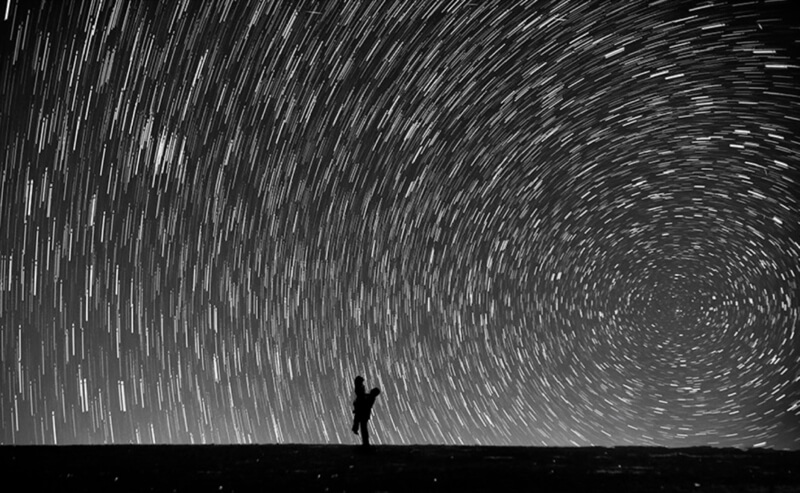Staying creative and innovative can be a challenge when you’ve been in photography for a while. At some point, you may get the feeling that you’ve taken every possible photo and that there’s no reason to keep going. Because you’ve stopped growing creatively, you’re at risk of losing your passion for your job or hobby.
One way to rekindle your love for photography is to focus on your creative growth. Creativity helps you approach photography in a fresh way and discover new methods for taking great photos. It also makes photography more fun.
To help boost your creativity, we’ve put together a list of ways to become a more creative photographer in the new year.
Nimit Nigam by Heaven on Earth…

1. Believe It’s Possible To Become More Creative
The first step to becoming more creative is to believe creativity is something you can get better at. A lot of us are taught that our creativity is fixed. We’re told that some lucky people are born creative geniuses, while others are not.
Within this mindset, there’s nothing we can do to change our creative output or “talent”. The sad part of this perspective is that it’s a self-fulfilling prophesy. If you think you can’t grow creatively, you won’t.
If, instead, you believe creativity is a skill, not a birthright, you’ll be more open to creative growth. You can and will actually get better at it. As Henry Ford once said, “Whether you think you can, or you think you can’t—-you’re right.”
That’s why it’s important to first let go of a “fixed mindset” towards creativity and adopt a “growth mindset“. The following steps below will show you that you can, in fact, become more creative.
2. Train Yourself To See Many Solutions
Creativity can be viewed as a problem-solving skill. Someone who only knows one or two ways to solve a problem isn’t as creative as someone with many solutions to the same problem. As a photographer, you’re trying to solve the problem of taking awesome photos. In other words, the more ways you know how to take a great photo, the more creative you are as a photographer.
Here are a few examples to practice seeing more than one solution:
- Before you take a shot, pause and think of three or five different ways to take the photo.
- Consider how you would have taken a good photo if the conditions were different (lighting/weather/camera/settings/style/etc).
- Look at the work of other photographers and imagine other ways you could capture the same scene or subject.
Simon Gardiner – From the sky down

3. Learn New Things
We tend to see creativity as coming up with something out of thin air. However, most innovations and art build on ideas and technology that are already there. The creative process is often a matter of taking (and combining) what is already around us, and move it one step further. Steve Jobs, for example, didn’t invent the personal computer, but he did take it to the next level. Picasso first learned how to paint traditionally and was then influenced by other artists.
The ability to make new connections between things is an essential part of creativity. Ideas and skills are the resources you use to combine and create new things. This is why it’s important to learn new things in order to be creative. The more skills and knowledge you have, the more potential connections you can make.
When you learn a new technology or subject, even if it’s unrelated to photography, you open up new paths for taking interesting photos. So, in the new year, let your curiosity take you to new places. Let topics outside of photography inspire you. You might end up with a whole new way of creating photos!
4. Fail More
If every photo you take is amazing, you’re probably not getting more creative with your work. You grow by trying out new things, and when you try new things, most of the time you fail.
One way to make sure you’re growing creatively is to keep track of your failure rate. You can calculate your failure rate by documenting your failures. Whenever you take a set of bad photos by pushing yourself, mark it down in a journal or diary. Then, after seven days (or a month), you know the number of “failures” you experienced per week, which is your current failure rate. The next step is beating that target the following week by trying out new things.
Alternatively, you could aim for a certain number of failed photos per shoot, say three to five, in which you go out of your comfort zone. Hang on to these photos and keep them in a special place to look back on. The main point is that failure is a sign of progress you should celebrate and keep track of.
5. Create Empty Space In Your Life
You become more creative when you alternate periods of focus with periods of relaxation. It’s the relaxation part that we sometimes overlook, but it’s no less important for creativity than intense focus.
New ideas and solutions often pop up at times when we least expect them. You’ve probably experienced such moments during a shower or commute, when you weren’t actually thinking about a problem, but suddenly you thought of a solution. In these situations, your subconscious was still working on the problem, while you were doing something else.
It’s these types of sudden insights you want to make space for in your life. You can create this empty space for creativity by going on a walk, meditating, or doing nothing at all. Even when you don’t have epiphanies during these activities, they help you recharge for when you start focusing on your photography again.
All of the above photo were selected from our fantastic Flickr group. Want to be part of a creative community of photographers? Feel free to join our group!



